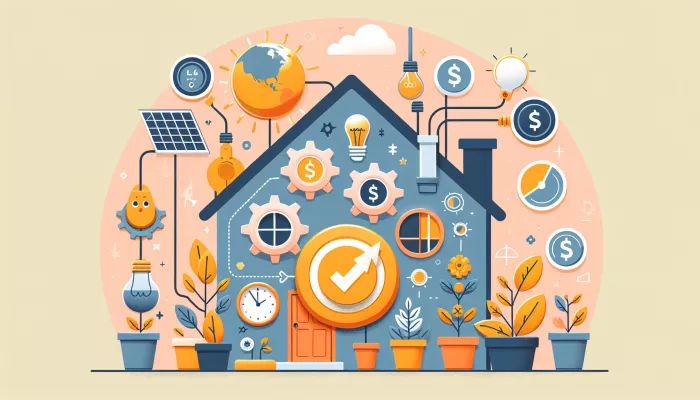

An environmentally friendly home not only contributes to reducing environmental impact, but also offers a healthier living space and often significant resource savings.
Here are some simple strategies anyone can adopt to make their home greener.
Replacing traditional light bulbs with Led lamps or compact fluorescents can significantly reduce energy consumption.
In addition to lasting longer, these lamps consume a fraction of the energy, reducing the amount of CO2 released into the atmosphere and the value of the electricity bill.
Take advantage of natural ventilation is another effective method for creating a more pleasant environment at home without overly relying on air conditioners or heaters.
As well as opening windows and creating wind paths help to regulate indoor temperature naturally.
Solar energy is a clean and renewable source.
Install solar panels in your home can significantly reduce dependence on non-renewable energy sources, reducing both your ecological footprint and long-term energy costs.
Opt for ecological cleaning products It is recyclable materials reduces the consumption of harmful chemicals and the production of waste.
Furthermore, purchasing products with sustainable packaging or recycled supports more environmentally responsible production practices.
A composting allows you to transform organic waste into quality fertilizer for gardens and gardens.
Above all, reducing the amount of waste sent to landfills and, simultaneously, improving soil health naturally.
These practices not only improve our immediate environment, but also contribute to global sustainability efforts.
Starting with small changes can lead to significant impacts in the future.
Save energy and water Not only does it ease your pocket, but it is also crucial for the preservation of our planet. Here are some effective strategies for reducing consumption and promoting sustainability.
Implement these practices not only will it help reduce your energy and water consumption, but it will also have a positive impact on the environment. Small steps can make a big difference.
The act of reusing and recycling materials that would otherwise be discarded brings a series of undeniable environmental, economic and social benefits.
Still, these practices are key elements in promoting a more sustainable economy and a better world for future generations.
Pollution Reduction: When recycling, less waste is deposited in landfills, reducing soil, water and air pollution.
Furthermore, recycling certain materials, such as paper, results in fewer trees being cut down, thus preserving ecosystems and biodiversity.
Energy saving: The recycling process generally consumes less energy than producing new products from virgin raw materials.
For example, recycling aluminum consumes 95% less energy than its original production.
Reduction of GHG Emissions: Lower energy consumption also means fewer greenhouse gas emissions, combating climate change.
Job Creation: The recycling industry requires labor to collect, sort and process recyclable materials, generating new jobs and contributing to the local economy.
Sustainability in Business: Companies that adopt recycling practices can reduce production costs by using recycled materials, in addition to improving their image among conscious consumers.
Environmental education: Encouraging reuse and recycling contributes to raising awareness among the population about the importance of preserving natural resources and reducing the impact on the environment.
Social inclusion: Selective collection and recycling programs can promote the inclusion of people in situations of social vulnerability, offering job and income opportunities.
Adopting reuse and recycling practices is an essential step towards living more sustainably.
We all have a role to play in protecting our planet, and starting with small changes in everyday life can have a big positive impact.